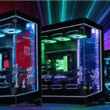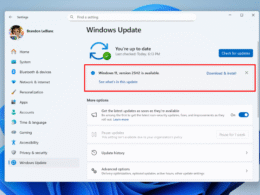Tesla Under Investigation: NHTSA Scrutinizes Full Self-Driving System for Safety Violations
Summary
- The NHTSA launches an investigation into Tesla’s Full Self-Driving (FSD) system for multiple safety violations.
- Key issues include incidents of running red lights and driving into oncoming traffic, leading to injuries.
- Previous regulatory challenges highlight ongoing concerns regarding the safety of autonomous driving technology.
On October 9, 2023, it was reported that the U.S. National Highway Traffic Safety Administration (NHTSA) is currently investigating Tesla due to concerns surrounding its Full Self-Driving (FSD) system. This investigation focuses on alleged violations of traffic regulations, particularly incidents such as running red lights and wrong-way driving.
Investigation Details
The NHTSA’s Office of Defects Investigation has identified 58 traffic safety incidents linked to the FSD system, with 14 of those incidents resulting in accidents. Alarmingly, these incidents have resulted in 23 reported injuries. Key issues include situations where Tesla vehicles equipped with FSD have either failed to stop at red lights or inadvertently run red lights after a brief stop. Additionally, there are reports of vehicles entering oncoming lanes during turns, suggesting a disregard for crucial traffic signals that direct drivers to maintain their lane.
Rail Safety Concerns
In conjunction with these violations, the NHTSA is also reviewing safety incidents related to railroad crossings. Reports indicate that several FSD-equipped Tesla vehicles have failed to stop at these crossings, posing a serious risk as trains approach. This raises significant concerns regarding the reliability of the FSD software, especially in circumstances requiring immediate responsiveness.
Past Regulatory Scrutiny
This investigation is part of a broader pattern of regulatory scrutiny Tesla has faced regarding its autonomous driving features. Previous inquiries by the NHTSA have examined accidents involving FSD in conditions of low visibility. The agency concluded that the FSD system "failed to effectively ensure drivers remained focused on the road," which contributed to a series of severe accidents.
The current investigation will also determine whether Tesla has adhered to reporting requirements for FSD-related accidents, as mandated by regulatory authorities. Furthermore, the agency is assessing the safety risks associated with the vehicle’s design features, such as hidden door handles.
Implications for Tesla and Autonomous Driving
The NHTSA’s inquiry into Tesla’s FSD represents critical scrutiny not just for the automaker, but also for the broader autonomous vehicle sector. As the industry evolves, it faces mounting pressure to ensure that self-driving technologies meet stringent safety standards. Tesla’s challenges could prompt calls for more rigorous oversight and regulation of autonomous vehicles, potentially affecting how these technologies are developed and deployed in the future.
Looking Ahead
As this investigation unfolds, it serves as a stark reminder of the complexities involved in deploying autonomous systems. Adequate safety protocols and regulatory compliance must be prioritized to protect both drivers and pedestrians. The outcome of the NHTSA’s review may lead to significant changes in the way Tesla and other manufacturers approach self-driving technologies.
This situation underscores the critical need for transparency and accountability as companies navigate the pioneering yet perilous road of autonomous driving. With ongoing concerns from the public and regulators alike, the future of Tesla’s FSD technology hangs in the balance.
As authorities continue to scrutinize these developments, consumers and industry stakeholders will be keenly watching how Tesla addresses these challenges and what measures it will implement to enhance safety in its vehicles.
In conclusion, the NHTSA’s investigation of Tesla’s FSD system highlights existing vulnerabilities in autonomous driving technology and brings to light the urgent need for effective safety measures. As Tesla responds to these challenges, the implications extend beyond its vehicles, echoing a broader dialogue on the future of autonomous mobility and roadway safety.








